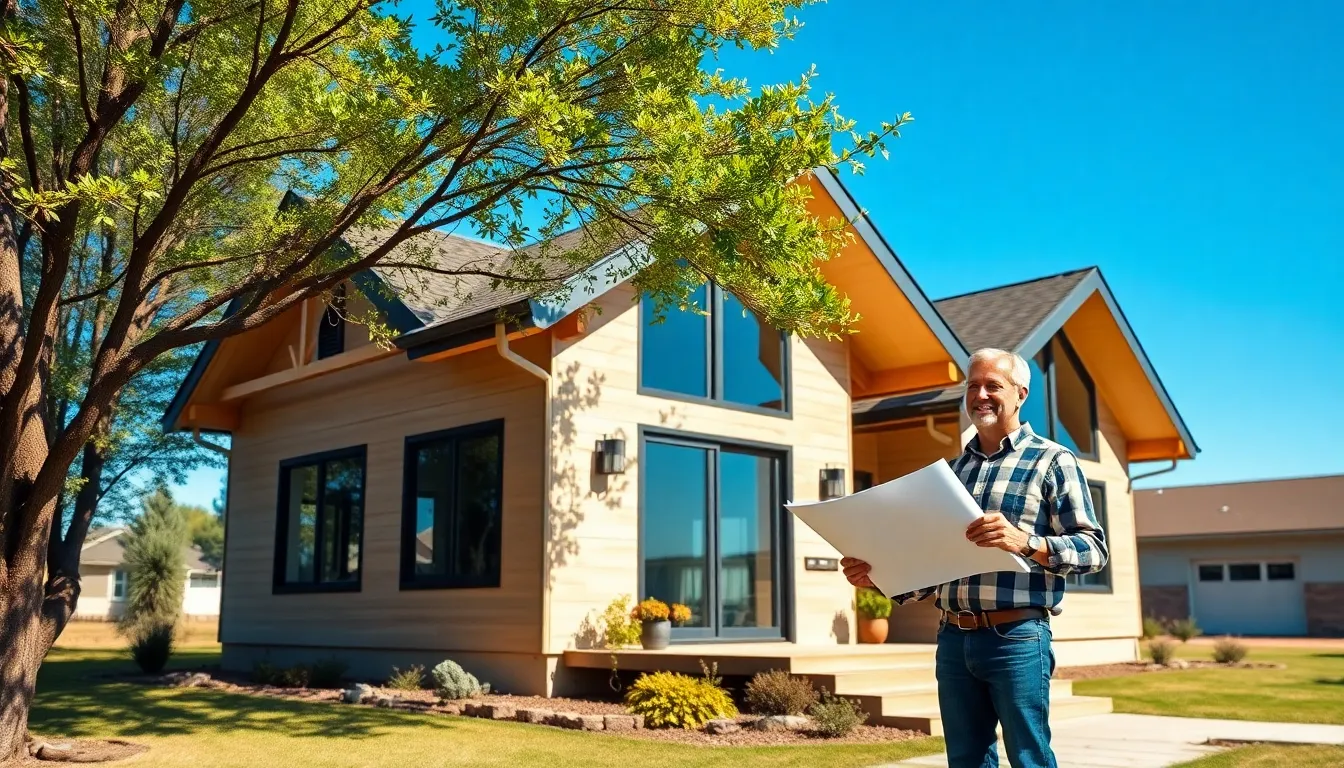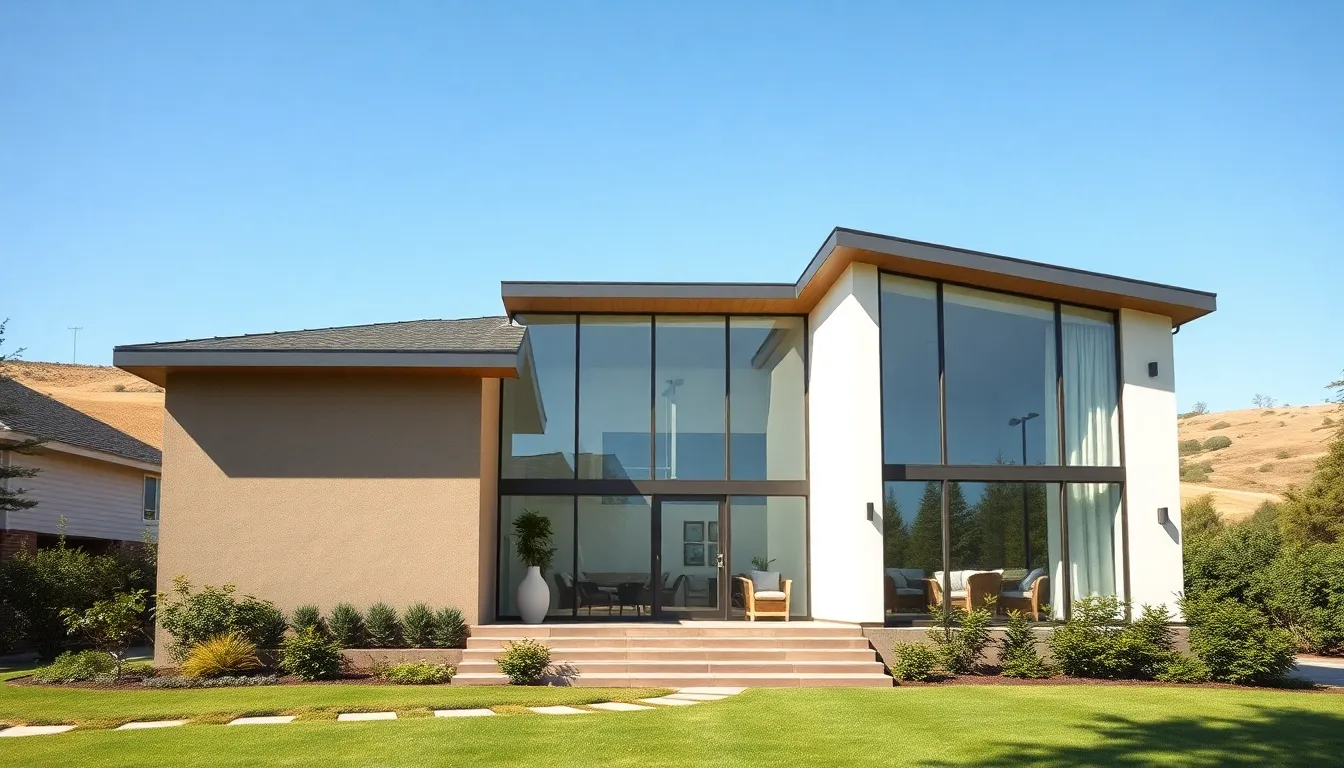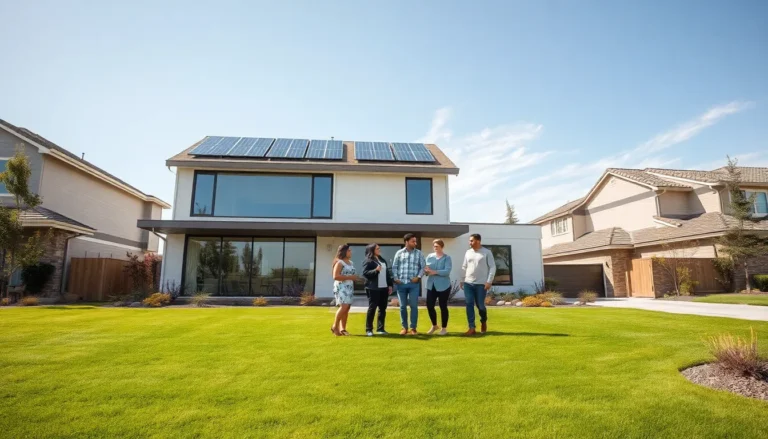Table of Contents
ToggleImagine waking up in a house that feels like a cozy hug, where the sun greets you just right and the breeze dances through your living room. House orientation isn’t just about aesthetics; it’s the secret sauce for energy efficiency and comfort. With the right positioning, a home can harness natural light and airflow, making it a sanctuary that’s both eco-friendly and wallet-friendly.
Importance of House Orientation for Efficiency
House orientation plays a crucial role in maximizing comfort and energy savings. The right positioning impacts aspects like natural light and airflow, essential for an eco-friendly living space.
Energy Efficiency Benefits
Energy efficiency significantly improves with the correct house orientation. South-facing windows allow ample sunlight, reducing heating costs during winter months. Proper design can minimize reliance on artificial lighting, creating brighter interiors. Roof overhangs help shade windows in summer, lowering air conditioning needs. Strategically placed trees can block cold winds, enhancing thermal comfort. A well-oriented house often leads to lower utility bills and a reduced carbon footprint.
Environmental Impact
House orientation also influences its environmental impact. Efficient energy use decreases greenhouse gas emissions, which contributes to a healthier planet. Homes designed with orientation in mind often require fewer resources for heating and cooling. Sustainable living is more achievable when buildings work harmoniously with natural elements. Additionally, energy-efficient homes promote conservation efforts by utilizing renewable energy sources. Thoughtful orientation enhances overall ecological sustainability in communities.
Factors Influencing House Orientation
House orientation is impacted by several critical factors, including geographic location and climate considerations. Understanding these elements helps in achieving optimal efficiency in a home.
Geographic Location
Geographic location greatly affects house orientation choices. Latitude plays a significant role, determining the sun’s angle throughout the year. Homes positioned closer to the equator benefit from nearly consistent sunlight, while those farther away require strategic planning to maximize solar gain. Local topography also influences the choice; hills or varying elevations may obstruct sunlight. Additionally, cultural and regional architectural practices can guide orientation decisions. For example, coastal areas often prioritize views and breezes, while rural settings may focus on long-term energy efficiency.
Climate Considerations
Climate considerations are essential in determining how a house should be oriented. In colder climates, south-facing windows capture sunlight to enhance warmth during winter. Conversely, in warmer climates, it’s vital to minimize direct sun exposure to reduce cooling costs. Roof overhangs can provide necessary shade for windows. Wind patterns also need consideration; aligning the house to block prevailing winds can enhance thermal comfort. Specific local climate conditions influence the balance between heating and cooling needs, guiding homeowners toward energy-efficient designs.
Optimal House Orientation Techniques
Optimal house orientation enhances energy efficiency and creates a comfortable living environment. Several techniques contribute to achieving this goal.
Solar Orientation
Solar orientation focuses on maximizing sunlight exposure. South-facing windows capture sunlight during winter, providing warmth and reducing heating costs. This aspect minimizes reliance on artificial lighting throughout the day. Passive solar design techniques, such as thermal mass materials, absorb heat and release it when temperatures drop. Utilizing roof overhangs can prevent overheating in summer by shading windows. Additional benefits include solar panels, which should ideally face south for optimal energy production, maximizing renewable energy use.
Wind Direction
Wind direction plays a crucial role in ventilation and comfort. By aligning windows and openings with prevailing winds, homeowners can enhance natural airflow, reducing the need for mechanical cooling. Positioning the house to block cold winter winds with trees or landscape features increases thermal comfort. Utilizing cross-ventilation further improves air circulation, ensuring fresh air flows through living spaces. Minimizing wind exposure enhances energy efficiency by lowering heating and cooling demands, making house design more effective in various climates.
Designing with House Orientation in Mind
House orientation significantly influences the overall efficiency of a home. Design choices that reflect orientation principles lead to a comfortable living environment and optimize energy use.
Architectural Considerations
Architectural design must align with the intended orientation to maximize efficiency. Orienting the house to capture winter sunlight enhances warmth, particularly through south-facing windows. Overhangs not only provide shade during summer but also preserve natural light in winter. Choosing proper materials, like thermal mass, aids in temperature regulation throughout the year. Integrating large windows strategically enhances natural ventilation, improving indoor air quality while reducing the need for mechanical cooling. Utilizing local topography and landscape elements also supports energy efficiency, ensuring the house benefits from natural features like trees, which shield from harsh winds.
Interior Layout Adjustments
Interior layout adjustments play a crucial role in maximizing the benefits of house orientation. Positioning common areas, such as living rooms and dining spaces, near sunny windows promotes natural light use throughout the day. Bedrooms that face east capture early morning light, providing a gentle wake-up experience. Arranging spaces to utilize cross-ventilation creates a comfortable environment, as airflow becomes essential for cooling. Open floor plans enhance airflow across rooms, improving overall comfort. Additionally, placing energy-efficient appliances in strategic areas aligns with energy-saving goals, minimizing electricity usage while promoting sustainability.
Conclusion
House orientation plays a pivotal role in achieving energy efficiency and comfort in home design. By thoughtfully positioning a house to harness natural light and airflow, homeowners can significantly reduce energy costs while enhancing their living environment. Incorporating strategies like solar orientation and wind direction not only promotes sustainability but also contributes to a healthier planet.
As individuals consider their home design, understanding the local climate and geographic factors can lead to informed decisions that maximize efficiency. Ultimately, a well-oriented house becomes a sanctuary that balances comfort, reduced utility bills, and an eco-friendly lifestyle, making it a worthwhile investment for any homeowner.








